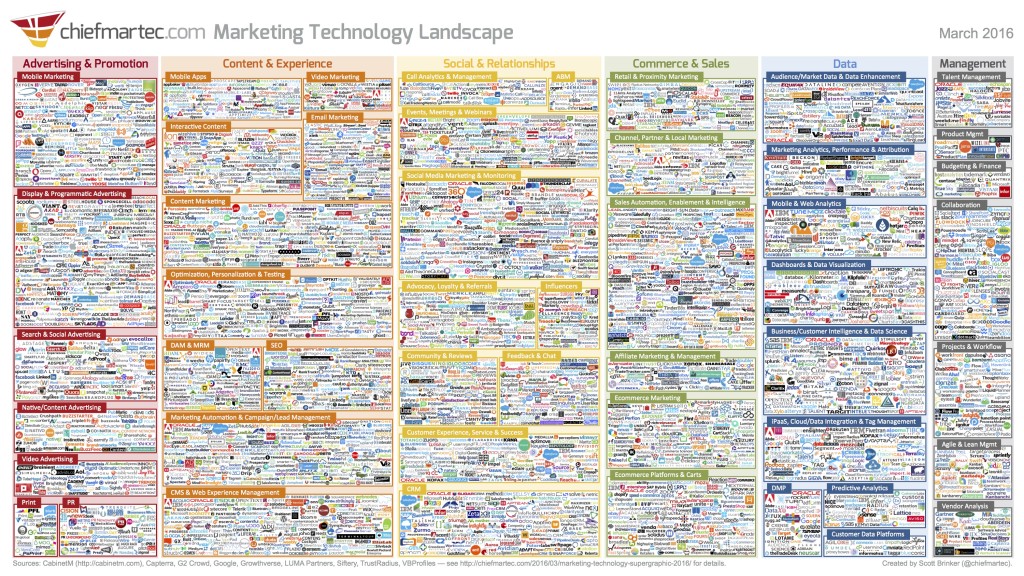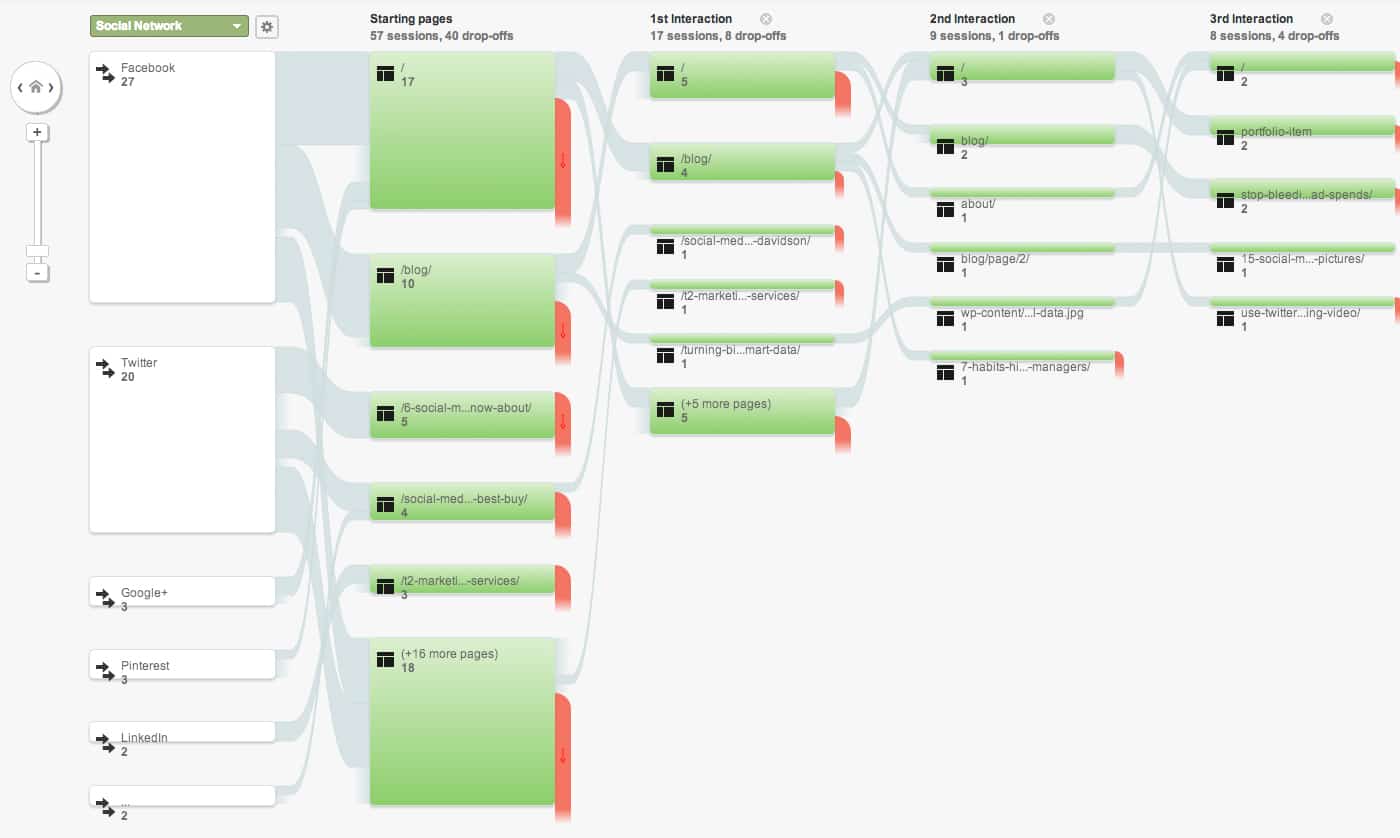Tools & Technologies
5 Scary Site Security Issues to Protect Against
/by Corey PadveenIntroduction
It’s Halloween, and if there’s one thing we can definitely be scared of, it’s a security breach. Your visitors won’t trust you if they think their data is being stolen or their accounts are being hacked. That might lead them to leave for another site, costing you both money and reputation. To prevent this from happening, you need to protect your site properly, which means making sure everything is up-to-date and secure—even the little things! Let’s take a look at five common issues that could cause problems on your site:
Weak passwords
You know the feeling. You’re writing a password, and you’re so close to getting it right—but then you stumble over that one character, and it’s all gone. You’ve got to start again from scratch.
Strong passwords are the first line of defense against hackers and other nefarious actors who want access to your site’s servers, data and resources. The longer your passwords are, the harder they are for hackers to guess correctly (and thus more difficult for them to break in), but this isn’t an unbreakable rule: if it were that simple, there’d be no need for strong passwords at all! To keep things simple enough for humans while still making them hard enough for computers, I recommend using 8-12 characters long combinations of letters, numbers and symbols with no repeated characters or patterns (e.g., “5kfJ7ymu”).
Not protecting against CSRF attacks
Let’s face it: security is hard. It is much easier to go back to a site you love and continue using it than it is to spend time exploring new tools or researching how your favorite sites protect themselves against attacks. However, by not taking the time out of your day to ensure that you are protected against various forms of malicious attack, you’re putting yourself at risk of losing all your information.
So what exactly is CSRF? Well, CSRF stands for cross-site request forgery and is a type of malicious attack where one site tricks another into sending information without their consent (or awareness). The aim of this type of attack is usually to steal data from the victim’s account on another website so they can log in as them. For example: imagine that Bob logs into his bank account through his browser every day after work and checks his balance before making payments online; Alice wants access to Bob’s bank account but doesn’t have his username or password because she doesn’t know them offhand yet…what does she do? She’ll probably try logging in through some other way (like via email) until something works! This might sound like an unlikely scenario but even if Alice were successful in stealing Bob’s credentials this way then she could make transactions without him noticing any problem at all! In fact there are many ways that these attacks can occur – which we’ll get into shortly below.
Not securing the admin area
One of the most common mistakes we see is not securing the admin area. In fact, this is one of our most common security issues to fix!
The main reason why people don’t secure their admin areas is because they don’t realize it’s an issue and/or their site isn’t making enough money for them to care about fixing it. But just like with any other website on the internet, you’re leaving yourself vulnerable if you don’t take basic security precautions with your CMS-based (e.g. WordPress) site.
There are two ways that hackers can get into your site: either through brute force attacks (guessing passwords) or phishing scams (tricking people into giving out their login information). To prevent both of these from happening, make sure that you’re using HTTPS and a password for all URLs. This includes not only the login page for admins but also any pages within your admin dashboard that require authentication (i.e. changing settings). If possible, set up multi-factor authentication so no one can get access even if they have your password alone—and stick with longer passphrases instead of short ones!
SQL injections
SQL injection attacks are a type of attack that exploits poor coding practices to gain access to the database server. The attackers use input fields on the website such as search boxes, user login forms, or comment sections to inject SQL commands into database queries. This can be used to steal data or execute commands on the database server.
The best way to protect your site from SQL injection attacks is by making sure that your web application has proper input validation in place and uses prepared statements when accessing any databases. If you think your site has been attacked, check for errors in syslog files or other log files about failed database queries (i.e., “select * from users”). Also, look for suspicious file names like *.php*.sqlite3 or *.sqlite3 in hidden folders such as .git/.svn/.cvs/.hg/etc.
Playing fast and loose with permissions
While security settings can seem intimidating at first, it’s important to be aware that not all permissions need to be set to the highest level possible. If you’re wondering what kind of access you should give a user and your only answer is “the most,” it’s time for some soul-searching.
Make sure you have the right permissions for each user, and those permissions are set to the minimum level required. That means no more than one or two sites per person, depending on their specific needs within those sites (for example, if they’re just looking at site analytics).
Don’t give users more access than they need; don’t give them access to other sites outside of theirs; don’t let them see anything they shouldn’t see. And while we’re talking about this topic: Don’t set up an account with more than one username/password combo — just use one login per person!
Site security is important, so don’t forget to spend time on it.
As you’ve seen, this can be a pretty scary issue. So what can we do to avoid becoming the next victim? Here are four things that will help:
- Make sure you have a security plan in place.
- Make sure your team is trained on security procedures.
- Make sure you have a good security budget.
- Make sure you are regularly updating your security software and protocols. You should also be checking for vulnerabilities regularly to make sure there’s no weak spot in the system (you’ll want someone who knows what they’re doing for this).
Conclusion
So, there you have it—our five most common site security issues. We hope that this article has been informative and helpful!
The Future of Hospitality: More Personalized, Less Personal
/by Corey PadveenEvery industry is about to undergo significant changes. That seems especially true for the hotel and hospitality industry.
Few verticals are poised to change as dramatically as the hospitality industry. Currently, these verticals rely heavily on the oft-heralded “personal touch”; the staff of a hotel going the extra mile in providing a tailored, high-end experience that leaves guests feeling as though they’re staying in a familiar place, no matter the size of the structure. What we’re now seeing is a shift of guest priorities, however. That lends itself to a dramatic refocusing of both the technology and communications initiatives undertaken by properties and organizations in order to cater to this new dichotomy, and realign guest expectations with the new circumstances we’ve come to face.

The New Normal
Here’s where we stand when it comes to the current situation:
- Consumer priorities have shifted largely to place a much heavier value on safety and security
- Employees want assurances that their safety is being considered by their employer and around the workspace in general
- There is a preference from the majority of consumers to a contactless/limited contact experience with organizations and service providers
- Travel and hotel stays will likely be relegated to essential and business travel for the foreseeable future (with several flash polls suggesting that this preference will last until there is a vaccine available)
So where does that leave the hotel and hospitality industry?
Technology
There is no shortage of technology already in place at a hotel or resort. From check-in, to guest services, to the concierge, there is an entire system of logistics in place to make a guest’s stay the best experience possible. But much of what is in place includes a personal touch that is almost always required for the technology to work. We’re likely about to see that change.
There are several new (and some not-so-new) technologies that can remove the human interaction from the guest experience, and not only keep it in place, but actually improve it. Most of those changes come in the form of AI or contactless capabilities. If you want an extreme example, just look at the Henn-na Hotel in Japan, which is completely operated by AI and robots.
While we likely won’t see this kind of radical approach for the majority of hotels, some of the artificial intelligence that operates logistics and optimizes the guest experience could move further into the scope of what’s normal in a hotel experience. Integrating AI into check-in and check-out in order to reduce bottlenecks, leveraging AI in valet to lessen human contact (when/if it returns further down the line), and upgrading the concierge and subsequent logistics all seem like inevitable changes.
On-property upgrades will also likely include a consolidation of data-centric assets into a guest-facing mobile application capable of handling the entirety of the experience. This could range from checking in, to operating the elevator, to, in its simplest form, using a phone as an RFID room card, which many hotels already do, or have the capability to do.
Communications
Marketing is a particularly complex area for hotel and hospitality brands to tackle, largely because there is so much to focus on in order to reopen and recover. To effectively communicate with prospective guests, properties and brands will need to highlight how they are keeping employees safe, how they are providing the safest possible environment for guests, and, perhaps most importantly, reeducate prospective visitors on new technological implementations, processes, and expectations.
When it comes to employee safety, communications need to focus both internally and externally. Employees need to be made aware of the new operational reality and should be kept abreast of any updates or changes in real-time, but without the need to conduct in-person gatherings or meetings. This might require updates to internal communications efforts, and might also require a comprehensive overhaul of the existing system altogether. On the guest front, transparency and authenticity in how properties are protecting and caring for their employees will be crucial. Visitors want to know what measures are being taken to protect employees, not just for the sake of the employees, but also for their own safety. The steps being taken need to be made clear in order to highlight how those transcend into the guest’s experience.
This poses the second question: how are these brands and properties supposed to communicate with prospective visitors? Again, there are two key areas of focus. The first has to do with on-property communications. Hotel guests are accustomed to a degree of upselling during their visit to a hotel. This might include nudges to visit a bar at happy hour, offers for meals, and vouchers for amenities. Now, and at least for the time being, the primary interest of visitors is going to be how they are being protected while on property. Using a touchless mechanism, such as the mobile app discussed above, guests can be given a walkthrough of how their rooms have been cleaned, where hotspots are on the property in terms of large gatherings, and recommendations on where to go and what to do that might limit human interaction.
The second form of guest communication relates to external marketing mechanisms. These will no doubt need to focus on transparency and reeducation, with an emphasis on community; inviting members of a property or brand’s audience to be part of the process will prove insightful and inclusive. A focus on room discounts or special package offers simply isn’t going to cut it. There needs to be a conversation that welcomes visitors into the process, shows them what is going on, and provides a degree of comfort that their needs will be met while their safety remains paramount.
In Summary
This is a process that is going to take some time. There is a lot to do and the future of many within the hospitality industry relies on effectively addressing the new challenges in a timely and transparent manner. If the right steps are taken, however, the road to recovery can be a lot less bumpy than some might fear for an industry so large yet so personal.
Five Free Tools to Improve Your Start-up Business
/by Corey PadveenRunning a start-up can be challenging. With the use of helpful free tools, tedious and time-consuming tasks can be simplified and semi-automated.
Below I have outlined 5 helpful tools, which my business uses regularly. These will help you speed up and improve communication and productivity which will allow you to focus less on time-consuming procedures and more on improving our business.

Asana
Keeping up with the progress of your employees can be a time-consuming task. Using a central platform for communicating progress can help your projects run smoothly and on time.
Asana is a program which allows you to create projects, assign tasks to employees, and automatically create a calendar which upcoming tasks. Employees can then contact other employees on the platform to exchange ideas, and check off tasks once they are complete. The free version can have up to 15 employees and unlimited projects. By using this program, you can easily tell if an employee is on track with their work, and make adjustments accordingly.
Zoho Mail
When I started my first business, I needed email addresses ending in my domain (ex: name@mydomain.com). Using your domain’s hosting service for email can cost you over $5/month per email account under your already-purchased domain. Small costs add up when running a small business and can be avoided.
Using Zoho’s email service you can create up to 25 email users for your domain, free of charge. The only catch is that you have to use Zoho’s email platform to check your email which may be an inconvenience. Luckily, Google makes it easy to link your Zoho account to your Gmail. This way, if you are already used to checking your Gmail account, you can view and send all your mail from one place. For more info on how to link your Zoho account to Gmail, watch this video.
Google Drive
Google Drive may be the most commonly used platform in this top 5 list. Google drive is a powerful tool used for document collaboration, file sharing, and organization. Using Google Drive, users can collaborate in real time on text documents and spreadsheets and allows users to change the permissions of a document to read-only or edit as they please. The spreadsheet feature of Drive can be put to use to easily update important stats such as revenue, stock, etc. The platform makes it easy to create folders to keep all files organized and at no cost for 15 Gb of storage, it’s well worth trying.
Skype
Skype is known mostly as a tool for video calling, however, its instant messaging service can be powerful for your small business. A running issue faced by employees is the unnecessary amount of time checking and writing emails throughout the day. Email creates boundaries of formality which add time to the drafting of an email and can add significant time when reading through an email to find the important information.
Instant messaging on Skype makes it easy to send quick messages, pictures, and files between workers while saving the time of writing emails. The platform also supports group messaging for easy project discussions. Of course, it can also be used for conducting audio and video calls free of charge from one user to another. As a whole, Skype messaging can create a less formal and more productive culture within a business.
HootSuite
HootSuite is a popular marketing tool used by small businesses because of its simplicity and reliability. The platform offers a free limited version of the full software which can be effective for a small business that wants to improve their social media.
The free version allows users to schedule up to 30 social media posts across 3 social media accounts. This means you can have Hootsuite automatically post to your social media every day, at a specified time, rather than manually log into each social media account every day and posting on each account. This is a helpful solution for an entrepreneur who can’t find time to post consistently on their social media platforms.
These five free platforms should provide a helpful basis for running your start-up’s operations. Check them out and see if any of them make sense with your organization, then try them out for free to see them in action.
So Apple is Slowing Your iPhone
/by Corey PadveenApple has confirmed that older iPhones are running slower than new ones following the release of a new iOS.
You’ve probably heard the news that Apple iOS updates do, in fact, slow down old iPhones. This confirms a theory that began circling earlier this year as people noticed that with the release of new devices, old ones seemed to be working much more slowly (particularly after an update to the operating system). Apple has provided a fairly straightforward explanation, detailing the deterioration of lithium-ion batteries and how this slowing of the system helps keep the battery life intact, but the question still remains: why would they keep this a secret?

What Got People Talking
When this theory first began making the rounds, the hypothesis was that iPhone was intentionally slowing down older devices following the release of a new device in order to push people to upgrade their phones. This seemed pretty devious, but not at all out of the realm of possibility. At the end of the day, Apple lives and dies by its sales numbers, like any other company, and if they could find a way to manipulate sales, we wouldn’t put it past them to do so. That’s one of the big differences with Apple devices and Android. Unlike Apple, which controls both the device and the software, Android is (in most cases) operating independently of the hardware onto which it’s installed.
With that in mind, the conversation picked up steam over the past few months and the focal point was that Apple was deceiving customers and, ironically, downgrading the performance of older hardware with every software upgrade. Now, having reached a boiling point, Apple has been forced to respond.
What Apple Has Said
On Wednesday, Apple released the following statement:
Our goal is to deliver the best experience for customers, which includes overall performance and prolonging the life of their devices. Lithium-ion batteries become less capable of supplying peak current demands when in cold conditions, have a low battery charge or as they age over time, which can result in the device unexpectedly shutting down to protect its electronic components.
Last year we released a feature for iPhone 6, iPhone 6s and iPhone SE to smooth out the instantaneous peaks only when needed to prevent the device from unexpectedly shutting down during these conditions. We’ve now extended that feature to iPhone 7 with iOS 11.2, and plan to add support for other products in the future.
At its core, this is a fairly simple and understandable explanation. The trials that exist with lithium-ion batteries are no secret. Battery life is also something that consumers have noted as an issue in the past, so it would make sense that slowing the performance of hardware that is not built to run more advanced software would help with battery issues. But the issue here is not with Apple’s justification, it is with how they have handled this situation.
Too Late to Apologize?
Call it vanity, call it hubris, call it whatever you want, but Apple has shown time and time again that it is loathe to admit failure. Silicon Valley has largely adapted the concept of ‘Fail Fast, Fail Often’ or, in the case of Facebook until a few years ago, ‘Move Fast and Break Things’, but Steve Jobs was a notorious perfectionist. Apple’s culture (and Board, I presume) would not allow a representative to stand on the world’s stage and talk about software updates hindering the performance of old devices.
It also would not sit particularly well with iPhone owners to hear that the jokes that are often made about a phone being worthless within minutes of its purchase as upgrades are already being released to be completely true. In other words, Apple likely didn’t want to hop on stage at one of their conferences and say: “You have no choice but to buy this new phone for $1,000 even though yours is working fine, because soon it won’t.”
So instead of sharing with the world this bit of (fairly pertinent) information, Apple kept it quiet. Now, in the modern age of information sharing, there really isn’t much worse for a brand’s image than when consumers uncover the truth and expose an issue a brand has been trying to hide. That makes it virtually impossible for anything the brand says after the fact to be taken well. It falls very much into the category of ‘You’re Only Sorry Because You Got Caught’, which is nothing to be proud of. There is also the issue that Apple’s explanation, while believable, is going up against the widely believed theory that this is a sales tactic used to push iPhone owners to buy a new device as the old phones function at a fraction of the speed. That’s a hard opinion to shake, particularly when consumer trust in brands has been on a steady decline in the new age of information.
Will this hurt Apple? Probably not. Apple’s has built a strong enough base of loyalists and a good enough product that there is little they can do to ruin their brand value. Will this teach them a lesson? One hopes, but again, admissions like this aren’t decided by a virtuous employee, they are decided by a series of stakeholders and analysts running meticulously designed cost-benefit analyses.
Long story short: expect nothing to change.
There Are More Marketing Technologies Than Ever!
/by Corey PadveenThis article originally appeared on CoreyPadveen.com.
Every year (since 2011) Scott Brinker of ChiefMarTec.com releases the marketing technology landscape supergraphic, and this year was the most impressive one yet.
In 2011, there were about 150 marketing technologies categorized by Scott Brinker’s supergraphic. A lot has changed in the last five years. Now, as you can see below, there are over 3,500. That’s almost double what we saw last year (~1,800) and a market that has grown more than twentyfold since Brinker and his team started taking stock of what’s available on the market.
One of the more popular questions I am asked by clients and at conferences (and one of the questions I hear most often when sitting in on a session or webinar) has to do with these marketing technologies. More specifically, “What is the best tool for [INSERT TASK HERE]?” I always answer that question the same way: There is no one perfect tool. Simply put, the perfect tool(s) for you will depend on your objectives and whole host of other variables.
With a market that has grown as significantly as the marketing technologies space, you would think that by now, one of these clouds or suites would do it all. That couldn’t be further from the truth. As more of these technologies sprout up and claim to solve the last of your problems, the more difficult it becomes to identify the diamonds in the ever-expanding rough.
Some Positive Realities
It is encouraging to see that the largest categories in terms of available technologies (by volume) are also the ones related to the hottest topics of the day:
- Sales Automation, Enablement & Intelligence (220)
- Social Media Marketing & Monitoring (186)
- Display & Programmatic Advertising (180)
- Marketing Automation & Campaign/Lead Management (161)
- Content Marketing (160)
We’re seeing data make its way to the top of everyone’s must-have list, and the tech market is responding accordingly. No longer are these tools reserved for the largest of the large, and the richest of the rich. Data and business intelligence are crucial to businesses of all sizes, and the supply is starting to catch up to the demand.
Another bright spot is the fact that we are starting to see a trend of openness, as opposed to the Oracle model, which has long aimed to close off its acquired technologies to other Oracle products alone. Now, technologies are being built with the pseudo- or custom-cloud in mind, whereby marketers develop their own suite of tools as opposed to relying on the Salesforces and Microsofts of the world. So while the perfect savior tool might not yet be available, marketers can now have an easier time building a version of their perfect tool, once again rooted in their needs, capital and time.
The Future of the Industry
In a market where the number of active players has nearly doubled in a single year, watching tech stocks face valuation slashes (see my articles on LinkedIn and Snapchat) can’t be something anyone is too excited about. And while there are plenty of categories from which to choose, anyone can tell you that in the next few years (my estimates put it within 24 months) there won’t be enough room for 186 social media marketing companies, for example.
Every one of these spaces is becoming increasingly crowded. Most of them, at this point, are probably already overflowing with waste. It won’t be long before we start to see significantly more consolidation (something we have already started to see) and significantly more of these houses closing shop. The good ones (for the most part) will stick around, as they so often do, but as the market starts to balance, the best will be absorbed while the rest are extinguished.
So, while I would strongly advise testing and piloting everything that you think might be the perfect product for your needs, now is a time to approach newcomers cautiously, as you’d hate to invest your resources (time and money) into a product that only has a few months or a year on the market.
5 of the Best SEO Tools Marketers Should Know About
/by Corey PadveenThe marketplace for SEO tools is no smaller than any other, and there are plenty of great ones.
Just as there has been a proliferation of marketing, social media and management tools, there has been a growth in the number of SEO tools on the market. How to choose?
While there are several tools that offer some great features and assistance when it comes to search, these five are among the best SEO tools on the market that every marketer should know about.
1. Moz
For anyone who has researched SEO tools in the past, it should come as no surprise that Moz sits on top of the list. Long-heralded as one of the best search softwares on the market, a brief overview makes it easy to see why.
When it comes to keyword research and link building, few tools are stronger than Moz. The software also provides a thorough competitive analysis and a series of additional tools (with the pro version) to help any search marketer find success.
The only drawback is found when looking into volume. While some other tools on this list allow for a fairly extensive number of keywords to be researched, programs to be tracked and social accounts to be analyzed, Moz doesn’t offer quite as many. But that doesn’t take away from its excellent value-added.
2. Raven Tools
Another powerful search software, Raven Tools, with a series of tools that will help any marketer – from newbie to experienced search pro – optimize a campaign or website.
Track up to 20 social accounts (more than Moz), receive extensive competitive analyses and conduct thorough keyword research with Raven Tools. There is also an extensive analytics dashboard, which any marketer loves to have.
Support is also outstanding, and the only drawback is the keyword research depth that is offered with the tool. While services like Web CEO Online offer 500 keywords for analysis, Raven only offers 100.
3. Web CEO Online
Web CEO Online offers tons of keywords for analysis and is a dream for the multi-faceted product search marketer.
There is also a keyword generator, a link-building tool, competitive analysis and plenty of reporting. Again, this service offers info and recommendations related to social (as any good tool will) and top-of-the-line reporting.
The online/cloud version of this service is not quite as robust as the desktop version, but if you’re willing to go pick it up at the store or order it online, it is well worth it.
4. SEMrush
With features like a phrase matching tool and up to 500 keywords that can be researched by a user, SEMrush is great tool-based service.
If you’re looking for help tracking competitors, SEMrush is also going to be one of your go-to services. While it is not quite as robust as its cohorts mentioned above when it comes to things like campaigns and social, it does give you plenty of insights into what is happening with your industry when it comes to search.
5. UpCity
While we are certainly grateful that UpCity included one of the t2 eBooks as one of the best on the web, we can assure you that their inclusion here is based on the fact that UpCity really is one of the top search tools on the market.
Now while UpCity is more of an online marketing solution, it does offer an SEO toolkit that can prove to be extremely useful to small businesses looking for all-in-one solutions. There is not quite as much depth in terms of keywords and reporting, but there is a suite of tools that will help you along the way when you are getting started with SEO.
It is particularly useful for smaller enterprises that need some assistance with every aspect of their online marketing initiatives and not just SEO.
Conclusion
There are plenty of SEO tools on the market today, and each one has its own value depending on what it is you are trying to achieve. Be sure to conduct proper research when deciding on a tool and outline your goals and necessities clearly in order to be certain that you are making the right choice.
We would love to know more about your favorite SEO tools! Tell us about them in the comments below or on Twitter!
3 FREE Social Media Measurement Tools
/by Corey PadveenFree social media measurement tools are always a hot commodity for marketers.
If you’re like a lot of social media marketers, then you are often faced with significant hurdles when it comes to both measuring your results and receiving any sort of significant budget to make it easier. Luckily, there are options that exist to make your life much easier!

While there is a whole host of tools that exist on the paid side of the spectrum (some very affordable and others quite the opposite) it is always useful to start your endeavor into the world of social media measurement with some free tools. These are a few that can be particularly useful and provide quite a bit of insight.
Google Analytics
It might seem like Google Analytics does little more than track website traffic, but when you are using it properly, it can be one of your most valuable resources for measuring the success (and even revenue) of your social media strategy.
Between the social dashboard (under Acquisition) and the ability to set Goals and Filters from social networks, there is no shortage of what can be measured on Google Analytics. Use the system to better understand your social audience, identify which pieces of content are driving the most engagement (segmented by network) and even see which networks are driving the most revenue (either through direct sales or some sort of quantifiable action) in order to optimize your budget allocation.
Google Analytics does a whole lot more than simply track your visitors.
Simply Measured
Granted, there is a paid version of Simply Measured and it is certainly not the least expensive option on the market. But, the free reports offered by the service are amongst the most comprehensive and valuable of any free service on the web.
Perhaps one of the benefits of these free reports is the fact that they are not limited to only the most basic of networks. In addition to Facebook and Twitter, you can also generate reports for networks like Instagram, Vine, Google+ and even link to your Google Analytics reports and better understand your audience.
If ever there was a way to entice users to upgrade to a paid version, Simply Measured has figured it out by offering such detailed free reports that you almost need to see what more they could provide.
Social Mention
Though not a brand-specific analytics tool for social media, per se, Social Mention does provide detailed analytics around keywords (branded or otherwise) that can serve as valuable guidelines on creating content and participating in the social conversation.
Understanding what is being said about your brand, your competitors and your industry as a whole, and examining the audience discussing these topics is important to the practice of strategy optimization. As a free tool, Social Mention is one of the more valuable ones and one of the easiest to use. Simply jump in and start analyzing the conversation, then take the data you’ve pulled and apply what you have learned about content, trends and the audience to your strategies.
It should be noted that there are several niche tools that focus specifically on one network. For example, there is Tailwind for Pinterest, which offers a fairly extensive free trial, and Iconosquare for Instagram, but the three listed here will help you measure your social presence in its entirety as opposed to a network-by-network basis.
Are there any other tools – free or paid – that you like using? Tell us about them in the comments below or on Twitter!










